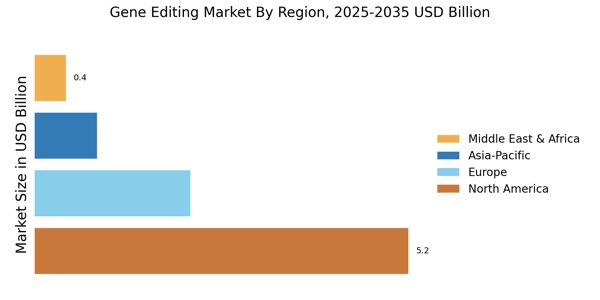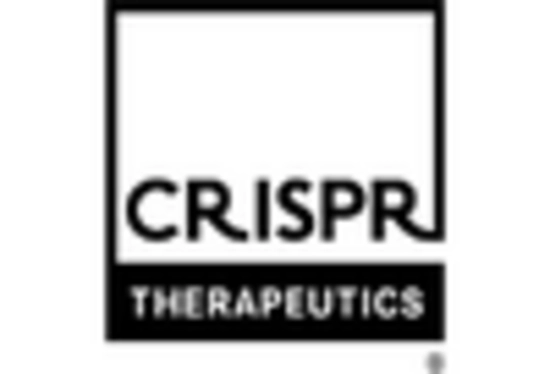Rising Demand for Precision Medicine
The Gene Editing Market is experiencing a notable surge in demand for precision medicine, which tailors treatment to individual genetic profiles. This trend is driven by advancements in genomics and biotechnology, enabling healthcare providers to offer more effective therapies. According to recent estimates, the precision medicine market is projected to reach USD 217 billion by 2026, indicating a compound annual growth rate of approximately 11.5%. As patients increasingly seek personalized treatment options, the Gene Editing Market is poised to benefit significantly from this shift, as gene editing technologies facilitate the development of targeted therapies that address specific genetic disorders. This growing emphasis on personalized healthcare solutions is likely to propel investments in gene editing research and development, further enhancing the industry's growth trajectory.
Increased Investment in Biotechnology
Investment in biotechnology is a critical driver for the Gene Editing Market, as it fuels innovation and research initiatives. Venture capital funding for biotech companies has seen a substantial increase, with investments reaching over USD 20 billion in recent years. This influx of capital supports the development of cutting-edge gene editing technologies, such as CRISPR and TALEN, which are revolutionizing the field of genetic engineering. Furthermore, public and private sector collaborations are becoming more prevalent, fostering an environment conducive to breakthroughs in gene editing applications. As the biotechnology sector continues to attract significant financial resources, the Gene Editing Market is likely to expand, enabling the commercialization of novel therapies and enhancing the overall landscape of genetic research.
Growing Awareness of Genetic Disorders
The rising awareness of genetic disorders among the public and healthcare professionals is driving the Gene Editing Market forward. As more individuals become informed about the implications of genetic conditions, there is an increasing demand for effective treatment options. This awareness is further amplified by educational campaigns and advancements in genetic testing technologies, which facilitate early diagnosis and intervention. The market for genetic testing is projected to grow significantly, with estimates suggesting it could reach USD 10 billion by 2025. Consequently, the Gene Editing Market stands to gain from this heightened focus on genetic health, as gene editing technologies offer promising solutions for treating and potentially curing various genetic disorders, thereby improving patient outcomes.
Advancements in Gene Editing Technologies
Technological advancements in gene editing are a pivotal driver for the Gene Editing Market. Innovations such as CRISPR-Cas9, base editing, and prime editing are transforming the landscape of genetic engineering, allowing for more precise and efficient modifications to DNA. These advancements not only enhance the accuracy of gene editing but also expand the range of potential applications, from agriculture to therapeutics. The market for gene editing technologies is expected to grow at a compound annual growth rate of over 15% in the coming years, reflecting the increasing adoption of these tools across various sectors. As researchers and companies continue to explore novel applications, the Gene Editing Market is likely to witness significant growth, driven by the demand for innovative solutions to complex genetic challenges.
Regulatory Support for Gene Editing Research
Regulatory support for gene editing research is emerging as a crucial driver for the Gene Editing Market. Governments and regulatory bodies are increasingly recognizing the potential benefits of gene editing technologies, leading to the establishment of frameworks that facilitate research and development. For instance, streamlined approval processes for clinical trials and funding initiatives aimed at supporting gene editing projects are becoming more common. This supportive regulatory environment encourages investment and innovation within the industry, as companies are more willing to pursue research initiatives with clearer pathways to market. As regulatory bodies continue to adapt to the evolving landscape of gene editing, the Gene Editing Market is likely to experience accelerated growth, fostering advancements that could lead to groundbreaking therapies and applications.


















Leave a Comment